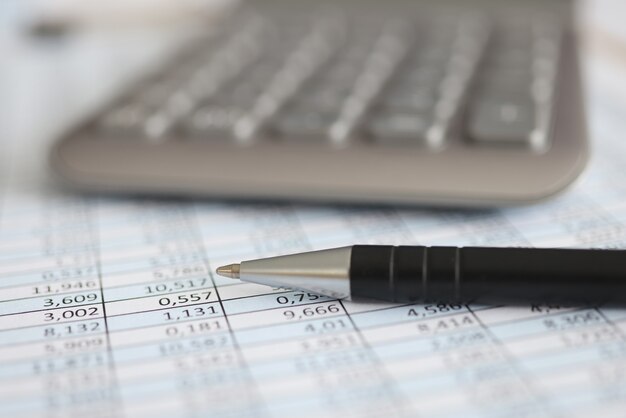Navigating Preferred Dividends: A Comprehensive Guide to Calculation
In the world of investing, dividends offer a stable stream of income. Although common stock dividends are known to many, preferred dividends play a pivotal role, providing specific advantages that assure a reliable return. Understanding how to calculate preferred dividends empowers investors and enriches their financial strategies. This guide unravels the intricacies of preferred dividends, showcasing the steps to determine these values while offering insights into their broader significance in the investment ecosystem.
Understanding Preferred Dividends
Preferred stock represents a unique class of equity with fixed dividend payments. These are usually specified as a percentage of the par value — the nominal or face value of the stock mentioned in the financial documents.
Features of Preferred Stock
- Priority in Dividends: Preferred shareholders receive payments before common stockholders.
- Fixed Dividend Rate: The dividend rate is predetermined and does not fluctuate with the company's earnings.
- Non-voting Rights: Typically, preferred shareholders do not have voting privileges in company affairs.
- Par Value Importance: The dividend is commonly computed based on the stock's par value instead of the current market value.
Calculating Preferred Dividends
Understanding how to calculate the preferred dividend is crucial for assessing its impact on your financial outcomes. Here's how to go about it:
Basic Calculation Formula
To calculate the preferred dividends, you can use the formula:
[ ext{Preferred Dividend} = ext{Par Value} imes ext{Dividend Rate} ]
Where:
- Par Value refers to the stock's issued value.
- Dividend Rate is the annual percentage payout provided by the company.
Steps to Calculate
- Identify the Par Value: Found in offering documents or on the company's balance sheet.
- Determine the Dividend Rate: Usually specified as a percentage in company reports or prospectuses.
- Apply the Formula using the par value and the dividend rate to find the annual dividend per share.
Example Calculation
Suppose a company issues preferred stock with a par value of $100 and an annual dividend rate of 6%. The calculation would be:
[ ext{Preferred Dividend} = $100 imes 6% = $6 ext{ per share annually} ]
Historical Context and Implications
Preferred dividends emerged to offer companies a way to raise capital without diluting control. This section dives into their longevity and evolving role in financial markets.
Origin and Evolution
- 19th Century Origins: Originally used by railways and utilities, offering fixed income to investors.
- Modern Applications: Financial institutions currently favor preferred stocks, as they are treated as equity while providing tax advantages on dividends.
Investor Perspective
Preferred dividends are highly attractive to investors seeking stable income, particularly in low-interest-rate environments. They assure returns irrespective of market volatility, ensuring predictability in income streams.
Types of Preferred Stock
Not all preferred stocks are created equal. Here’s an exploration of various types:
Cumulative vs. Non-Cumulative
- Cumulative Preferred Stock: Unpaid dividends roll over to future periods, providing an advantage if payments are missed.
- Non-Cumulative Preferred Stock: Missed dividends do not accumulate, posing a higher risk if a company defers payments.
Participating vs. Non-Participating
- Participating Preferred Stock: Allows shareholders to receive additional earnings beyond the fixed rate.
- Non-Participating Preferred Stock: Limits payments strictly to the fixed rate without any extra earnings.
Convertible Preferred Stock
Convertible preferred stock allows investors to convert preferred shares into a predetermined number of common shares, providing potential for capital appreciation.
Preferred Dividends in Financial Statements
Understanding financial documentation is key for investors. Preferred dividends have several implications across a company's financial statements.
Balance Sheet Impact
Preferred stocks are shown in the equity section, reflecting their role as ownership but with priority claims over dividends.
Income Statement Considerations
Dividends on preferred shares reduce net income but are not deducted in calculating earnings per share (EPS) for common stocks.
Taxation Considerations
The tax treatment of preferred dividends can differ based on region, often being more favorable, which enhances their appeal as an investment vehicle.
Practical Considerations and Tips
For effective portfolio management, investors must consider various factors when opting for preferred stocks.
Key Considerations
- Interest Rate Sensitivity: Preferred stocks can be interest-rate-sensitive; rising rates might impact their attractiveness.
- Creditworthiness of the Issuer: Investors should assess the issuing company's financial health to mitigate default risks.
- Portfolio Diversification: Preferred stocks add diversification, balancing the risk of more volatile common stock holdings.
Practical Tips
- 📊 Research the Issuer: Dive into the company's financial health and alignment with your investment objectives.
- 💼 Diversify Investments: Balance your portfolio with various asset types to mitigate risks.
- 🔍 Stay Informed: Keep track of interest rate trends and adjust your strategy accordingly.
Preferred Dividends vs. Common Dividends
A comparative look underscores the unique edge of preferred dividends:
| Feature | Preferred Dividends | Common Dividends |
|---|---|---|
| Payment Priority | Paid before common dividends | Paid after preferred dividends |
| Stability | More stable with fixed rates | Can fluctuate with company earnings |
| Rights | No voting rights | Voting rights in shareholder matters |
| Growth Potential | Limited growth potential | Potential for capital appreciation |
Conclusion: The Strategic Value of Preferred Dividends
Preferred dividends represent a captivating blend of stability and predictability, making them a prudent choice for income-focused investors. By understanding their calculation and implications, you're better equipped to harness their potential in achieving a balanced and informed portfolio. Always remember to align dividend investments with your broader financial goals, considering both the current environment and future market trends.
